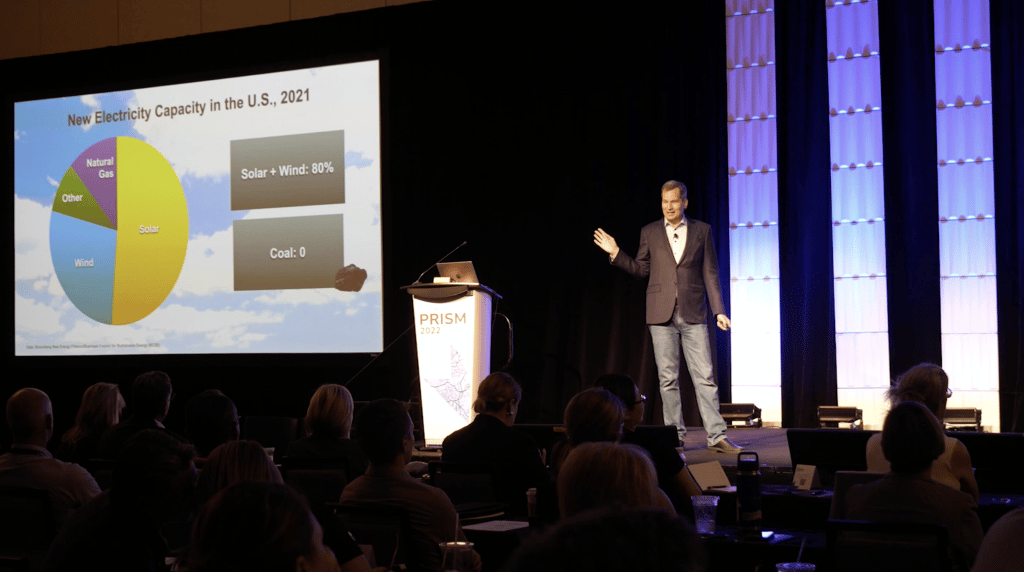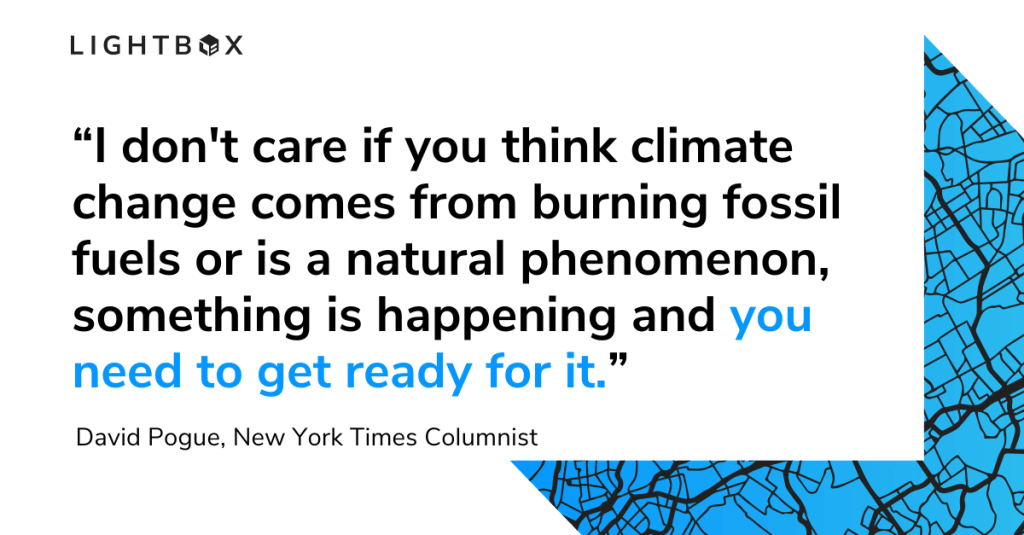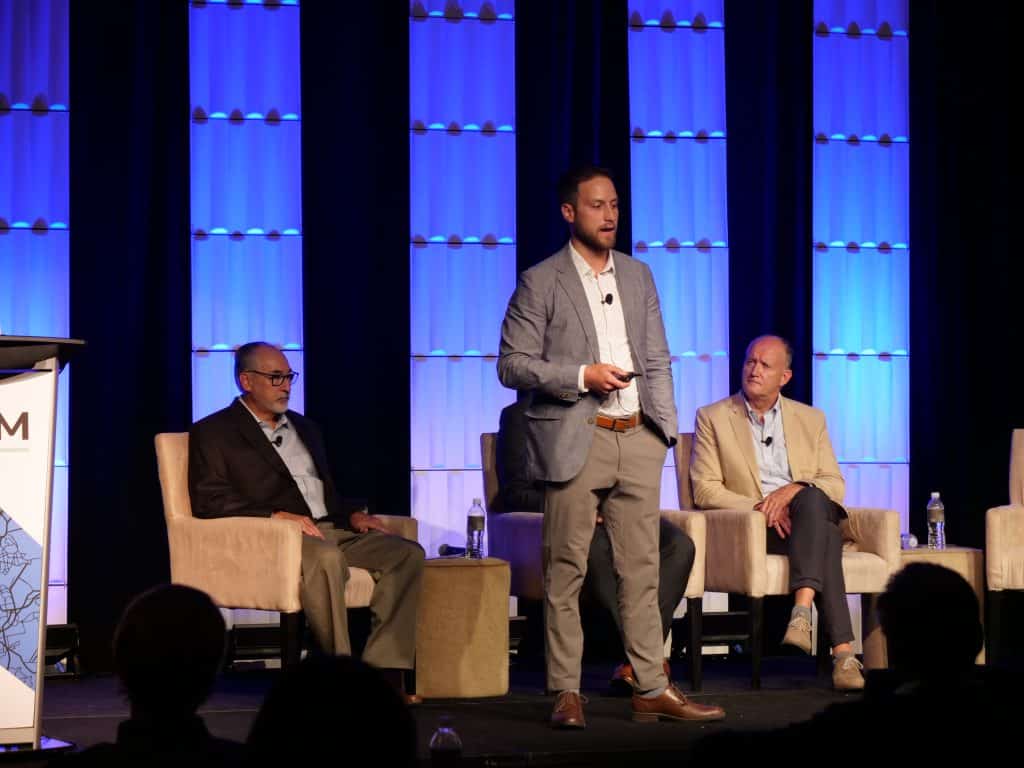Attendees at LightBox’s recent PRISM conference in Phoenix, Arizona heard from leading subject-matter experts on topics such as technological innovations, the challenges of a commercial real estate market in transition, new demands on lender risk management, and growth opportunities that will drive today’s CRE businesses forward. A key subject was how climate change is affecting the planet, and what humans can do to prepare for a warmer future.
In a keynote presentation, Greg Lindsay, chief communications officer of Climate Alpha, a location analysis platform steering governments and investments towards more climate-resilient geographies, discussed how post-pandemic trends and climate change are reshaping the work environment. Lindsay shared that now is an opportune time for us to reimagine what cities and real estate should be. An estimated 40 percent of Americans suffered from some form of climate disaster last year, whether flooding or hurricanes or wildfires or wildfire smoke damaging the air quality in places like the Pacific Northwest and the Rockies near Colorado. Fortunately, technology has given us powerful tools to deal with climate change.
Changing work habits are affecting the planet. Six times more people are working at home than before the pandemic, and that can’t happen without massive ramifications for the built environment. We’re seeing the rise of new real estate trends, such as individuals who need more space moving into single-family rentals because multifamily can’t accommodate them—and because the U.S. never built enough new homes after the financial crash.
Keynote speaker and New York Times columnist David Pogue said climate change is not just about warming—it leads to freak heat waves and freak cold waves, flooding and water shortages, droughts and intense rains. Natural systems are going haywire. Nature is a network of dominoes: if one falls, everything else falls, creating secondary and tertiary effects that don’t immediately seem to have to do with weather, such as volcanic eruptions, smaller beaches, more expensive commodities, and odder trends like more kidney stones in humans and smaller goats on farms.

According to Pogue, there are eight top-tier effects of climate change: Extreme heat, massive wildfires, an uptick in the number of hurricanes, flooding that threatens coastal cities, a rise in sea levels, drought, the spread of tornadoes to new parts of the country, and ticks, which are moving north and surviving longer because winters aren’t cold enough to kill them off. Together, they constitute the new normal. “I don’t care if you think climate change comes from burning fossil fuels or is a natural phenomenon, something is happening and you need to get ready for it.”

Pogue talked about the growing trend of climate migration—which involves people moving from one place to another for climate reasons—and climate gentrification, which means that as they move, they’re displacing poor people who already live in those places. It’s a huge and underdiscussed problem. But there is good news. In the U.S., carbon dioxide emissions have been dropping because we’ve been moving from coal to natural gas, which though bad is not as harmful. Coal is on the way out all over the world, even in China, which is still burning it.
Willy Accame, industry advisor at the National Center for Atmospheric Research, moderated a panel, The Urgency of Climate Risk Management in Commercial Real Estate. As the importance of climate risk management is pushed to the forefront, the pressure is on to proactively manage ESG investing. He shared information about new data management tools to help firms meet demand for accounting, reporting, and assessing climate risk at the property level.
Kevin Fagan, senior director and head of CRE economic analysis at Moody’s Analytics, said regulatory agencies have felt the impact of a Financial Stability Oversight Committee report released last year that presented guidance on regulatory approaches to climate change. It set up a task force to identify and fill data gaps, enhance disclosures, and model and manage risks. How do we take mitigating measures to stem potential financial instability? Financial institutions are waking up to this challenge—they’re deploying property resiliency mitigation measures and creating climate models, which should continue to improve during the next five to 10 years. Risk management and resiliency strategies will increasingly be developed across the enterprise as firms prepare for the future.

Brett Bass, R&D associate at Oak Ridge National Laboratory, discussed how climate change will have an impact on building costs, energy, and emissions. We’ll need powerful climate models that can simulate future weather data. Modeling allows the real estate industry to understand how to optimally design and construct buildings, and how best to allocate resources for making good energy-use decisions and for retrofitting older properties to meet new standards.

LightBox is actively helping customers prepare for and respond to climate change. We’re providing greenhouse gas emissions data from Oak Ridge via bulk feed and through our developer portal to real estate investors, brokers, lenders and banks, appraisers, engineers, and environmental consulting firms. Outputs include energy consumption in kBTUs; cost by energy type, electricity, and natural gas; consumption by purpose (heating, cooling, total); carbon dioxide emissions in tons (overall, electric, and natural gas); and total heating degree days and cooling degree days.
LightBox also collects data for regulated facilities and other sources of potential environmental contamination, which we combine with nationwide tax parcel and property attribute information and building footprint outlines. This singular, connected property dataset makes LightBox uniquely positioned to answer questions about the impact of storms and other catastrophic events at the property level, helping customers manage the effects of climate change—a task that will only grow more important in the years ahead.
Check out the LightBox PRISM Resource Hub
